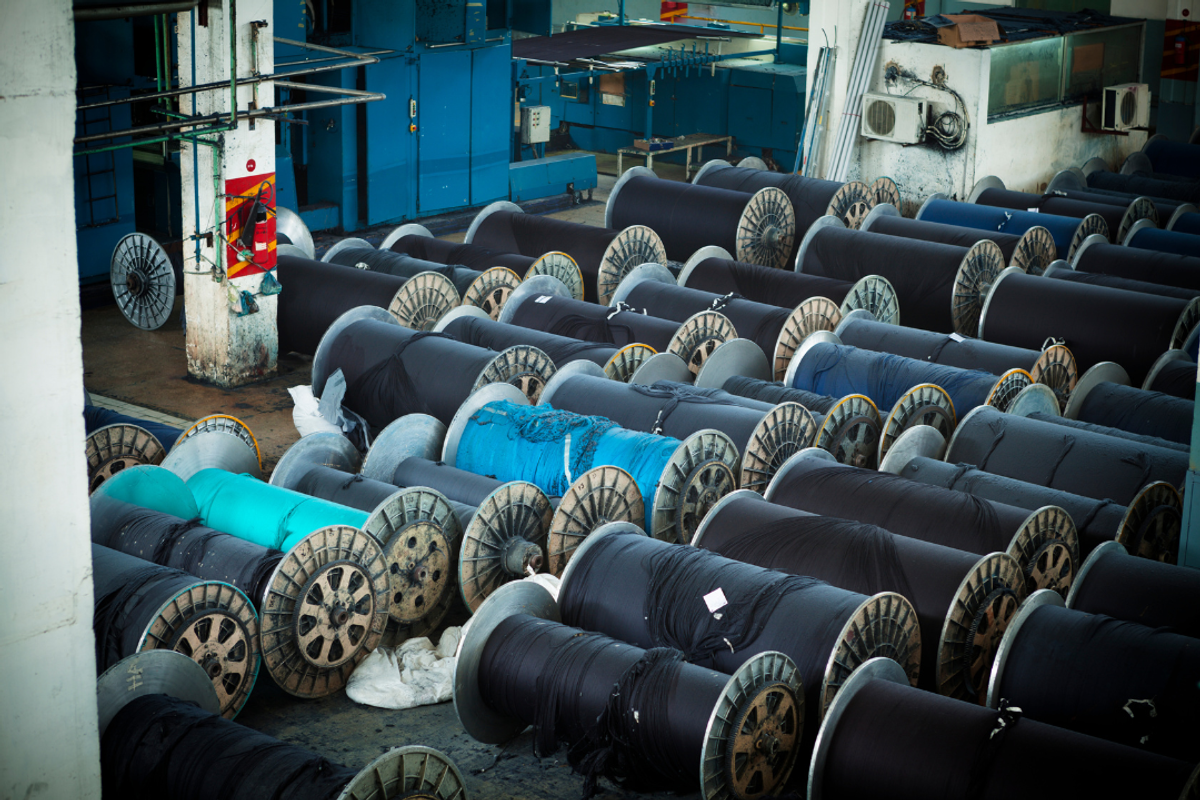Interloop leads Pakistan’s textile exports with $530 million in FY24
Just five companies combined exported textiles amounting to $2.13 billion

Javed Mirza
Correspondent
Javed Iqbal Mirza is an experienced journalist with over a decade of expertise in business reporting, news analysis, and investigative journalism. His work spans breaking news, editorial pieces, and in-depth interviews.

Rows of dyed thread spools lined to be taken for weaving denim fabric at a factory in Pakistan
Shutterstock
Pakistan's textile sector has always been the backbone of its exports and fiscal year 2023-2024 (FY24) was no different. Just five companies combined exported textiles amounting to $2.13 billion.
Interloop Limited topped the list with $530 million in exports. Style Textile (Pvt.) Limited followed with $488m, while Artistic Milliners, Gul Ahmed Textile Mills Limited, and Soorty Enterprises contributed $377m, $373m, and $358m, respectively.
Other leading exporters include Nishat Mills Limited with $352m, Feroze1888 Mills with $259m, Yunus Textile Mills with $248m, Artistic Garment Industries with $234m, US Apparel & Textiles with $225m, Liberty Mills with $213m, Utopia Industries with $169m, Al Karam Textile Mills with $168m, Sapphire Finishing Mills with $165m and Lucky Textile Mills with $152m.
Overall, the country’s textile and apparel exports grew by 0.93% in FY24, reaching $16.655bn compared to $16.501bn in FY23.
Despite some economic challenges at the fiscal year's start, the textile sector's output picked up in later months, contributing 54.29% to Pakistan's overall exports of $30.676bn in FY24. However, this share slipped from 59.52% in the previous fiscal year.
Challenges in FY25
The textile sector is likely to face increased challenges in FY25. These include a hike in the tax rate on exporters' personal income, a move that industry analysts predict will impact export figures in the coming months. At the same time, imports of textile machinery have plummeted, indicating a reduction in industry investments towards expansion or modernization.
Pakistan's cotton production and textile sectors are grappling with significant challenges due to climate change and a weak economy. The recent monsoon season has severely impacted the cotton crop, leading to disruptions in harvesting and ginning activities.
Meanwhile, the textile sector is also facing issues such as high costs, declining demand, and financial constraints, exacerbating the overall situation. Local cotton prices have remained consistently above international levels, putting additional pressure on mills that were hoping to benefit from lower prices.
Smaller mills that closed earlier in the year due to unviable business conditions have yet to resume operations, while larger mills are also struggling to continue operations due to high costs and financial constraints.
Adding to these difficulties, textile exporters who previously benefited from reduced tax on exports are now subject to the normal tax regime, further straining their financial situation.
While there is hope that the end of the monsoon season might improve cotton arrivals and lead to potentially lower prices, the next few quarters will be crucial in determining the textile sector's ability to navigate these challenges and remain competitive in both local and export markets.










Comments
See what people are discussing